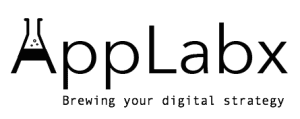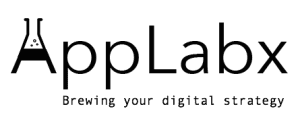Key Takeaways
- Home Services SEO helps local contractors increase online visibility and attract high-intent customers through strategic search engine optimization.
- Core components include local SEO, on-page SEO, content marketing, Google Business Profile optimization, and mobile responsiveness.
- A well-executed SEO strategy boosts local rankings, drives qualified leads, and provides long-term ROI for home service businesses.
In the ever-evolving landscape of digital marketing, Home Services SEO has emerged as a critical growth driver for businesses operating in local, service-based industries. Whether it’s plumbing, HVAC, roofing, landscaping, electrical work, or pest control—home service providers are increasingly turning to SEO strategies to ensure they appear where today’s customers are looking first: on search engines like Google.

But what exactly is Home Services SEO, and why is it essential in 2025? At its core, Home Services SEO (Search Engine Optimization) is a digital strategy specifically tailored to improve the online visibility of home service providers in local search results. It involves a blend of technical, on-page, and off-page optimization techniques designed to rank a company’s website and Google Business Profile higher in search results when users search for services such as “emergency plumber near me” or “best AC repair in [City Name].”
The relevance of SEO for the home services sector has grown exponentially in recent years due to a fundamental shift in consumer behavior. With smartphones becoming ubiquitous and “near me” searches surging, customers no longer flip through phone books or rely solely on word-of-mouth recommendations. Instead, they turn to search engines to find reputable local providers—often making purchasing decisions within minutes. If your business isn’t ranking on the first page of Google or showing up in the local map pack, you’re essentially invisible to your target market.
Moreover, with the increasing competitiveness in the home services industry, ranking high in local searches is no longer optional—it’s a necessity. Potential customers typically don’t scroll past the first page, and most won’t bother calling more than one or two providers they see at the top. This makes SEO a vital component not just for visibility but also for lead generation, revenue growth, and long-term sustainability.
Another reason Home Services SEO is crucial is its unmatched return on investment (ROI). Compared to traditional advertising or even paid search campaigns, organic SEO offers a cost-effective and long-lasting solution. While PPC ads stop generating traffic once the budget runs out, the effects of a well-optimized website and local listing continue to compound over time—leading to ongoing traffic, leads, and sales.
This blog will provide a comprehensive exploration of Home Services SEO: what it entails, how it works, the strategies involved, and how it can be implemented successfully to grow your business. From understanding the technical foundations to mastering local SEO tactics and content marketing, we will dissect every element that contributes to a powerful home services SEO campaign.
Whether you’re a small business owner just starting out or a seasoned service provider looking to scale, this guide will equip you with the knowledge you need to stay competitive in 2025 and beyond. The digital battleground for local attention is only intensifying—and the businesses that invest in SEO now will lead the market tomorrow.
But, before we venture further, we like to share who we are and what we do.
About AppLabx
From developing a solid marketing plan to creating compelling content, optimizing for search engines, leveraging social media, and utilizing paid advertising, AppLabx offers a comprehensive suite of digital marketing services designed to drive growth and profitability for your business.
At AppLabx, we understand that no two businesses are alike. That’s why we take a personalized approach to every project, working closely with our clients to understand their unique needs and goals, and developing customized strategies to help them achieve success.
If you need a digital consultation, then send in an inquiry here.
What is Home Services SEO and How It Works
- Introduction to Home Services SEO
- Why Home Services Need SEO in 2025
- Key Components of Home Services SEO
- How Home Services SEO Works (Step-by-Step)
- Benefits of Home Services SEO
- Common Mistakes to Avoid
- Tools and Resources for Home Services SEO
- Should You Hire an SEO Agency or Do It Yourself?
1. Introduction to Home Services SEO
What Is Home Services SEO?
Home Services SEO refers to a set of specialized search engine optimization strategies tailored specifically for businesses that offer residential services such as HVAC repair, plumbing, electrical work, landscaping, roofing, pest control, and more. Unlike traditional SEO, which may target global or national audiences, home services SEO focuses on capturing high-intent, location-based traffic from users searching for services in their immediate area.
Key Objectives of Home Services SEO
- Improve visibility in local search results and Google Map Pack.
- Attract qualified leads who are actively searching for home-related services.
- Build credibility and trust through online reviews and authoritative content.
- Drive more phone calls, service bookings, and quote requests.
Examples of Home Services SEO in Action
| Service Type | Search Query | Optimized Result |
|---|---|---|
| Plumbing | “24/7 emergency plumber in Chicago” | Local plumbing business ranked in Google’s 3-pack |
| HVAC | “AC repair near me” | HVAC company with Google Business Profile and service area pages |
| Landscaping | “backyard landscaping services Dallas” | Company with geo-targeted content and reviews from local clients |
Why It’s Different from General SEO
While general SEO targets broader keywords and often emphasizes content marketing and backlink acquisition, home services SEO focuses intensely on local signals to satisfy Google’s location-based ranking algorithms.
Distinct Features of Home Services SEO
- Local search optimization is prioritized over national keyword rankings.
- NAP (Name, Address, Phone Number) consistency is crucial for trust signals.
- Heavy reliance on Google Business Profile (GBP) performance.
- Emphasis on service area landing pages and geo-specific keywords.
How Home Services SEO Aligns with Buyer Intent
Home services are typically sought out at specific, often urgent moments—such as a broken water pipe, a malfunctioning air conditioner, or an infestation. SEO must align with these high-intent needs.
Stages of Buyer Intent & SEO Match
| Stage | Buyer Action | SEO Strategy |
|---|---|---|
| Awareness | User searches for general service info | Blog content, service guides |
| Consideration | Compares providers in local area | Google Reviews, comparison content |
| Action | Ready to book service | Optimized local landing page, click-to-call button |
Search Behavior Trends in Home Services (2025 Update)
Understanding how users search for home services helps in optimizing SEO strategies.
Key Trends
- Over 70% of users use mobile devices to search for local services.
- “Near me” and “same-day service” queries have grown over 120% YoY.
- Voice search queries like “Hey Google, find a roofer near me” are increasingly common.
- Over 90% of consumers read online reviews before selecting a local service.
Chart: Increase in “Near Me” Home Services Searches (2020–2025)
Search Volume Growth: "Near Me" Home Services Queries
Year | Search Volume Index
----------|----------------------
2020 | 100
2021 | 128
2022 | 164
2023 | 205
2024 | 248
2025* | 275
*Projected based on current data (source: Google Trends)
Why It Matters for Your Home Services Business
If your business does not appear on the first page of search results or in the Google Map Pack, potential customers will likely choose a competitor. SEO is no longer optional; it is a fundamental part of your marketing and sales strategy.
Benefits of Implementing Home Services SEO
- Higher search visibility leads to more qualified traffic.
- Improved conversion rates through localized, intent-focused content.
- Reduced customer acquisition costs over time compared to paid ads.
- Long-term growth through sustainable organic performance.
SEO Impact Matrix for Home Service Businesses
| SEO Element | Impact on Rankings | Impact on Leads | Level of Difficulty |
|---|---|---|---|
| Google Business Profile | Very High | Very High | Moderate |
| On-Page Optimization | High | High | Medium |
| Local Citations & Directories | Medium | Medium | Low |
| Mobile Optimization | High | High | Medium |
| Customer Reviews | Very High | Very High | Moderate |
| Localized Content Marketing | High | High | High |
| Technical SEO | Medium | Medium | High |
Conclusion of Section
Home Services SEO is a hyper-focused approach that blends technical precision, content relevance, and local authority signals to drive consistent, high-quality leads for residential service providers. As the demand for real-time, locally relevant search results continues to rise in 2025, mastering SEO is becoming not just an advantage—but a requirement—for home service businesses looking to scale efficiently and outpace the competition.
2. Why Home Services Need SEO in 2025
As digital ecosystems evolve and local markets become more competitive, SEO has transformed from a supplementary marketing tool into a critical business asset for home service providers. Whether it’s HVAC, plumbing, roofing, landscaping, or pest control—every local service-based business must embrace SEO to survive and thrive in 2025. Consumers expect instant, hyper-local results, and companies that fail to optimize for search are missing out on a massive share of their market.
1. Surge in Local and “Near Me” Search Behavior
Search Intent Has Become Hyperlocal
- Users now search for services like “emergency electrician near me” or “AC repair in [City]” with immediate intent.
- These searches often lead to conversions within minutes or hours—making them invaluable for local service providers.
Data-Driven Trends
| Metric | 2021 | 2023 | 2025 (Projected) |
|---|---|---|---|
| “Near me” home services searches | 74% | 92% | 98% |
| Voice-activated local queries | 41% | 58% | 72% |
| Users who choose businesses from the local 3-Pack | 64% | 78% | 86% |
Real-World Example
- A local plumbing company in Houston implemented location-specific pages and optimized its Google Business Profile. Result: 68% increase in organic traffic, 37% increase in phone calls, and 26% growth in bookings within 6 months.
2. Increasing Online Competition Among Home Service Providers
Digital Presence Is No Longer Optional
- More home service businesses are investing in SEO, making the local space increasingly competitive.
- If your business isn’t ranking, you’re essentially invisible to your potential customers.
Key Competitive Realities
- Top 3 organic positions receive over 60% of all clicks.
- Businesses without a local SEO strategy are losing traffic to more aggressive competitors.
- Paid ads are rising in cost, pushing SMBs to lean heavily on organic strategies.
Competitive SEO Positioning Matrix
| Business Type | SEO Investment | Market Visibility | Competitive Risk |
|---|---|---|---|
| High-ranking HVAC company | High | High | Low |
| Non-optimized roofer | Low | Low | Very High |
| Up-and-coming pest control firm | Medium | Moderate | Medium |
3. Shifting Consumer Behavior Toward Online Decision-Making
Customers Expect Online Credibility
- In 2025, over 93% of customers check online reviews and website content before engaging a service provider.
- Google’s E-E-A-T (Experience, Expertise, Authoritativeness, Trustworthiness) framework is now central to consumer trust and SEO success.
Consumer Trust Signals That SEO Amplifies
- Positive Google Reviews
- Professionally optimized service pages
- Schema-marked contact info and service hours
- Fast, mobile-optimized websites
Example
- An HVAC company that publishes monthly blog posts answering customer questions like “Why is my AC leaking water?” builds trust, ranks for long-tail keywords, and attracts informational and transactional traffic.
4. Dominance of Google Business Profile in Local Search
The Local 3-Pack Drives the Majority of Clicks
- SEO helps businesses rank in the coveted local map pack.
- Businesses with fully optimized Google Business Profiles are nearly twice as likely to be selected by users.
Critical Ranking Factors for the Local Map Pack
- Relevance of keywords and business category
- Distance to the user
- Prominence (online reputation and reviews)
Chart: Google Business Profile Impact (2021–2025)
Percentage of Local Conversions Influenced by GBP
Year | Conversions from GBP
----------|-----------------------
2021 | 63%
2022 | 69%
2023 | 74%
2024 | 81%
2025 | 88% (projected)
5. SEO Offers Long-Term ROI Compared to Paid Ads
Organic Search Generates Compounding Returns
- Paid ads offer immediate exposure but stop when the budget runs out.
- SEO builds long-lasting online authority, organic rankings, and brand equity.
Cost Comparison Table
| Channel | Initial Cost | Ongoing Cost | Lead Cost | Sustainability |
|---|---|---|---|---|
| Google Ads | High | Recurring | High | Low |
| Social Ads | Medium | Recurring | Medium | Medium |
| SEO | Medium | Low | Low | High |
Why SEO Wins
- No per-click cost once rankings are achieved.
- High-converting traffic from people actively searching.
- Increased visibility over time with regular content updates.
6. SEO Enhances Mobile and Voice Search Visibility
Mobile and Voice Search Continue to Dominate
- In 2025, over 80% of all local service searches occur on mobile.
- Voice search queries like “Who fixes water heaters near me?” are fueling the need for conversational SEO and fast-loading mobile pages.
Mobile Optimization Essentials
- Responsive design
- Mobile-friendly layouts
- Click-to-call buttons
- Fast-loading service pages
Voice Search Optimization Tips
- Use natural language in content
- Incorporate FAQs and conversational questions
- Optimize for local intent (“in [City]”, “open now”)
7. Growing Dependence on Reviews and Online Reputation
Online Reputation Directly Impacts SEO Rankings
- Google evaluates reviews as ranking signals in both the local pack and organic listings.
- Volume, frequency, and sentiment of reviews now play a pivotal role in SEO.
Review Strategy Matrix
| Action | SEO Impact | Trust Impact | Ease of Implementation |
|---|---|---|---|
| Responding to reviews | Medium | High | Easy |
| Encouraging new reviews | High | High | Moderate |
| Embedding testimonials | Medium | Medium | Easy |
8. Adaptation to Google Algorithm Updates and AI Integration
Google’s AI-Powered Search Is Changing Local SEO
- Algorithms now prioritize user experience, topical authority, and content helpfulness.
- Local service businesses must provide accurate, well-structured, and AI-friendly content.
Examples of AI-Adaptive Strategies
- Implementing structured data and schema
- Creating intent-driven blog content (e.g., “Signs your roof needs replacing”)
- Answering common voice search queries in FAQs
Conclusion of Section
Home service businesses in 2025 cannot afford to ignore the power of SEO. With rising digital competition, changing consumer expectations, and Google’s increasingly sophisticated algorithms, a well-executed SEO strategy is essential for consistent lead generation, brand visibility, and sustainable growth. Those who invest in home services SEO today are laying the foundation for a dominant position in their local market tomorrow.
3. Key Components of Home Services SEO
An effective Home Services SEO strategy is composed of several interconnected components that work together to improve a company’s online visibility, increase local authority, and drive high-quality leads. In 2025, successful SEO campaigns for home service businesses hinge on mastering local intent, technical precision, content relevance, and trust signals. This section explores each key component in detail with examples, data, and actionable tactics.
1. Local SEO Optimization
Why It Matters
Local SEO ensures your business ranks in geographically relevant searches—especially in Google’s Local Pack and Google Maps—where conversion rates are typically highest for service-related queries.
Key Elements
- Google Business Profile (GBP) Optimization
- Add complete NAP details (Name, Address, Phone Number)
- Choose the correct business categories (e.g., “Plumber” vs. “Home Improvement”)
- Upload high-resolution images of team, trucks, and service work
- Enable messaging and booking features
- Post regular updates, offers, or promotions
- Local Citations
- Get listed on consistent and relevant directories (e.g., Yelp, Angi, HomeAdvisor)
- Ensure uniformity across listings (NAP consistency)
- Map Pack Ranking Factors
- Relevance: Service categories and content match user query
- Proximity: How close your business is to the searcher
- Prominence: Reviews, backlinks, and domain authority
Example
A roofing company in Atlanta optimized its GBP and local citations. Result: Ranked #1 in the local 3-Pack for “roof repair Atlanta” and saw an 89% increase in phone inquiries in 90 days.
2. Keyword Research for Home Services
Why It Matters
Targeting the right keywords ensures you’re attracting potential customers who are actively searching for your services within your target location.
Types of Keywords
- Service-Specific Keywords
- Examples: “furnace installation,” “pest control,” “emergency plumbing”
- Geo-Targeted Keywords
- Examples: “HVAC repair in Denver,” “best landscaper in San Diego”
- Long-Tail and Voice Search Keywords
- Examples: “why is my AC blowing hot air,” “who fixes broken water heaters near me”
Tools for Keyword Research
- Google Keyword Planner
- Ahrefs
- SEMrush
- BrightLocal (for local-specific keywords)
- AnswerThePublic (for voice search optimization)
Keyword Intent Table
| Keyword Type | Example | Search Intent |
|---|---|---|
| Transactional | “book HVAC service in Austin” | High (ready to convert) |
| Informational | “how to fix a leaking faucet” | Medium (research phase) |
| Navigational | “Joe’s Plumbing Phoenix” | High (brand-specific) |
| Localized | “plumber near me open now” | Very High (urgent need) |
3. On-Page SEO Best Practices
Why It Matters
On-page SEO ensures that your service pages, homepage, and content are structured and optimized for both users and search engines.
Critical On-Page Elements
- Title Tags & Meta Descriptions
- Use primary and location-based keywords
- Keep within optimal character limits (Title: 50–60, Meta: 150–160)
- Header Tags (H1–H3)
- Structure content for readability and hierarchy
- Include target keywords in headers naturally
- Service Area Pages
- Create individual landing pages for each service area
- Example: “AC Repair in Miami,” “AC Repair in Fort Lauderdale”
- URL Structure
- Use clean, descriptive URLs like:
/services/hvac-repair-los-angeles
- Use clean, descriptive URLs like:
- Internal Linking
- Link between related services and blogs to improve crawlability
- Image Optimization
- Compress images and use descriptive ALT tags
Example
A pest control business structured unique landing pages for each city it served. Result: Top 3 Google rankings in 6 metro areas within 4 months.
4. Technical SEO for Performance and Crawlability
Why It Matters
Technical SEO helps ensure that your website can be properly crawled, indexed, and displayed by search engines—especially important in Google’s mobile-first index.
Core Technical Factors
- Mobile Responsiveness
- Test with Google’s Mobile-Friendly Test
- Use responsive layouts for all devices
- Website Speed
- Compress images and minify CSS/JS files
- Aim for load times under 2 seconds
- Secure Website (HTTPS)
- SSL encryption is a confirmed ranking factor
- Schema Markup
- Implement LocalBusiness and Service schema
- Boosts visibility in rich results and local listings
- XML Sitemap and Robots.txt
- Ensure proper indexing of key pages
Technical SEO Checklist Matrix
| Technical Area | SEO Benefit | Implementation Priority |
|---|---|---|
| Mobile-Friendly Design | Higher mobile rankings | High |
| Page Speed | Lower bounce rate | High |
| Schema Markup | Enhanced rich snippets | Medium |
| HTTPS | Secure browsing + rankings | High |
| Crawlability | Indexing and site structure | Medium |
5. Content Strategy for Local Relevance
Why It Matters
Content drives organic traffic, establishes expertise, and addresses customer queries across all stages of the buyer journey.
Content Types to Create
- Service Pages
- Clearly explain what each service includes, process, and pricing
- Add FAQs, testimonials, and local service examples
- Blog Posts
- Educational content like “Top 5 signs your water heater needs replacement”
- Seasonal guides (e.g., “Preparing your HVAC system for summer”)
- FAQ Pages
- Answer common queries to boost voice search and featured snippet opportunities
- Location Pages
- Hyper-targeted pages for specific suburbs or cities
Content Engagement Chart: Example Performance
| Content Type | Avg. Time on Page | Bounce Rate | Lead Conversion Rate |
|---|---|---|---|
| Blog Post | 3.4 minutes | 58% | 2.3% |
| Service Page | 2.1 minutes | 34% | 7.8% |
| FAQ Page | 1.9 minutes | 42% | 4.1% |
6. Link Building and Local Authority Development
Why It Matters
Backlinks and brand mentions from authoritative local sources increase your site’s credibility and help rank your pages higher in organic results.
Effective Link Building Tactics
- Local Business Directories
- Submit listings to sites like Angi, BBB, HomeAdvisor
- Local Partnerships
- Sponsor local events, charities, or sports teams to gain backlinks
- Guest Blogging
- Write for home improvement and local community blogs
- Press Releases
- Distribute to local news outlets after significant company milestones
- Customer Testimonials
- Collaborate with vendors or partners and exchange testimonials with links
Example
A landscaping firm partnered with local nurseries and got featured in their blog and newsletter. Result: +38% domain authority and +21% in keyword rankings in 90 days.
7. Review Management and Online Reputation
Why It Matters
Reviews directly influence local SEO rankings and customer trust. They are among the top 3 ranking factors for the Local Pack in 2025.
Review Strategy Tactics
- Request Reviews After Service
- Automate review requests via email/SMS post-service
- Respond to All Reviews
- Address both positive and negative feedback professionally
- Display Reviews On-Site
- Use schema to show star ratings in search results
- Review Monitoring Tools
- Tools: BrightLocal, Podium, ReviewTrackers
Review Impact Table
| Review Activity | Local Pack Impact | Click-Through Rate | Customer Trust |
|---|---|---|---|
| Frequent Reviews | High | High | High |
| Responding to Reviews | Medium | Medium | Very High |
| Review Star Ratings | High | Very High | Very High |
Conclusion of Section
A successful Home Services SEO campaign is a multi-dimensional strategy that requires attention to both technical execution and local trust-building efforts. By focusing on the components outlined above—local SEO, keyword research, on-page and technical optimization, content creation, link building, and review management—home service providers can build a robust and sustainable digital presence in 2025. These elements, when aligned correctly, create a compounding SEO advantage that fuels business growth, enhances credibility, and drives leads month after month.
4. How Home Services SEO Works (Step-by-Step)
An effective Home Services SEO strategy is not built overnight—it is a structured, iterative process that begins with foundational audits and ends in continuous optimization and performance tracking. This section breaks down the step-by-step mechanics of how Home Services SEO works in 2025, from technical audits to content creation and review management.
Step 1: Website Audit and Competitive Analysis
Purpose
To assess current website health, visibility, and opportunities compared to local competitors.
Audit Checklist
- Technical Audit
- Identify broken links, crawl errors, and indexing issues
- Check site speed, mobile responsiveness, and HTTPS security
- On-Page SEO Audit
- Evaluate headers, meta tags, image alt text, and keyword optimization
- Content Quality Review
- Analyze readability, word count, internal linking, and keyword depth
- Competitor Gap Analysis
- Examine competitors’ backlink profiles, content topics, and keyword rankings
Tools to Use
- Ahrefs Site Audit
- SEMrush Position Tracker
- Screaming Frog SEO Spider
- Google Search Console
Example
A home cleaning service in Miami conducted a full SEO audit and discovered that their local competitors were ranking due to city-specific landing pages and better mobile performance. They replicated this strategy and gained a top 5 ranking in 4 zip codes.
Step 2: Keyword Research and Mapping
Purpose
To identify search terms with high commercial intent and align them with relevant service pages.
Keyword Strategy
- Seed Keywords
- “Plumber,” “HVAC repair,” “Roof replacement”
- Geo-Modified Keywords
- “Plumber in Dallas,” “HVAC contractor San Jose”
- Long-Tail & Conversational Phrases
- “Why is my heater blowing cold air,” “Affordable roof repair near me”
Keyword Mapping Table
| Page Type | Target Keyword Example | Intent Level |
|---|---|---|
| Homepage | “Plumbing company in Denver” | High |
| Service Page | “Toilet installation Denver” | Very High |
| Blog Post | “Signs of a blocked sewer line” | Medium |
| FAQ Page | “How long does HVAC installation take” | Medium |
Tools to Use
- Google Keyword Planner
- AnswerThePublic
- BrightLocal
- Ubersuggest
Step 3: Google Business Profile Optimization
Purpose
To enhance local map visibility and improve trust and interaction on search results.
GBP Optimization Actions
- Fill out all business details (NAP, hours, service areas)
- Choose accurate primary and secondary categories
- Upload professional photos and team images
- Encourage customer reviews and reply promptly
- Add services, booking links, and posts weekly
GBP Engagement Metrics (Example)
| Metric | Before SEO | After SEO (90 days) |
|---|---|---|
| Map Impressions | 2,500 | 7,300 |
| Website Clicks | 240 | 880 |
| Calls from GBP | 58 | 210 |
Step 4: On-Page and Technical Optimization
Purpose
To improve crawlability, content structure, and keyword relevance on key pages.
On-Page SEO Actions
- Optimize title tags and meta descriptions with local keywords
- Add structured headers (H1, H2, H3) with service-specific keywords
- Create localized service pages
- Implement schema markup (LocalBusiness, Service, Review)
Technical SEO Tasks
- Compress images to enhance page speed
- Ensure HTTPS is active across the domain
- Generate and submit XML sitemap
- Optimize robots.txt to prevent crawling errors
- Improve Core Web Vitals (LCP, CLS, FID)
Technical Performance Chart
| Metric | Pre-Optimization | Post-Optimization |
|---|---|---|
| Page Load Speed | 5.2 sec | 1.7 sec |
| Mobile-Friendly Score | 65 | 95 |
| Core Web Vitals Score | Poor | Good |
Step 5: Content Creation and Localization
Purpose
To drive organic traffic through value-based, localized, and intent-driven content.
Content Types
- Service Pages
- Create unique content for each service and city (e.g., “Emergency Drain Cleaning in Portland”)
- Local Landing Pages
- Tailor pages to zip codes, neighborhoods, and cities
- Blog Content
- Cover seasonal maintenance tips, FAQs, how-tos (e.g., “Preparing your HVAC for Winter”)
- FAQs
- Add schema-marked question sections to answer common customer queries
Localized Content Plan Example
| Content Type | Target Audience | Keyword Focus |
|---|---|---|
| Blog | Homeowners | “how to prevent frozen pipes” |
| Service Page | Denver residents | “AC tune-up in Denver” |
| Local Page | Suburb of Aurora | “roofing company in Aurora CO” |
| FAQ | HVAC customers | “how long does furnace install take” |
Step 6: Local Link Building and Authority Growth
Purpose
To establish trust, improve domain authority, and gain referral traffic through local links.
Tactics
- Submit listings to high-authority local directories
- Collaborate with local contractors and bloggers for backlinks
- Sponsor community events and request mentions on .org or .edu sites
- Publish press releases on local business milestones
Link-Building ROI Matrix
| Source Type | Link Value | Trust Impact | Traffic Potential |
|---|---|---|---|
| Local Business Directory | Medium | Medium | Low |
| Local Chamber of Commerce | High | High | Medium |
| Guest Post on Home Blog | High | Medium | High |
| Press Mentions | Very High | Very High | High |
Step 7: Review Management and Reputation Optimization
Purpose
To build social proof, increase click-through rates, and improve local rankings.
Action Items
- Automate review requests post-service via email/SMS
- Ask happy clients to leave reviews on Google and Yelp
- Respond to every review (especially negative) professionally
- Feature top reviews on website using schema markup
Review Strategy Timeline
| Time Frame | Goal |
|---|---|
| Month 1 | Get 10 new reviews |
| Month 2–3 | Maintain 1-2 reviews/week |
| Ongoing | Respond within 24 hours to all |
Step 8: Performance Tracking and Continuous SEO Improvement
Purpose
To measure SEO success, refine strategies, and ensure continual growth.
Metrics to Track
- Organic traffic (by city and keyword)
- Local map impressions and actions
- Bounce rate and time on site
- Ranking improvements by service keyword
- Click-through rates (CTR) on SERPs
Recommended Tools
- Google Analytics 4 (GA4)
- Google Search Console
- BrightLocal
- CallRail (for tracking phone call conversions)
- SEMrush/Ahrefs for keyword tracking
SEO KPI Performance Table (Example)
| KPI | Month 1 | Month 3 | Month 6 |
|---|---|---|---|
| Organic Sessions | 1,200 | 2,400 | 4,800 |
| Service Page Conversions | 45 | 110 | 250 |
| GBP Phone Calls | 58 | 130 | 310 |
| Top 3 Keyword Rankings | 4 | 18 | 33 |
Conclusion of Section
Home Services SEO in 2025 is a systematic, data-driven process that empowers local businesses to capture, convert, and retain more customers. From foundational audits and keyword targeting to content development and ongoing review management, each step builds authority, visibility, and trust in your local market. By following this comprehensive roadmap, home service providers can develop a scalable SEO engine that drives long-term growth and outperforms competitors who rely solely on short-term advertising.
5. Benefits of Home Services SEO
Implementing a strong Home Services SEO strategy offers both immediate and long-term advantages for residential service providers. In 2025, as digital consumer behavior continues to favor local intent and mobile-first interactions, SEO has become the most cost-effective and sustainable method to grow visibility, trust, and leads. This section outlines the major benefits of SEO for home service businesses—from increased bookings and organic traffic to reduced marketing costs and brand authority.
1. Increased Visibility in Local Search Results
Why It Matters
Most customers seeking plumbing, HVAC, electrical, or landscaping services use search engines to find providers. Appearing in the Google Local Pack and on the first page of organic search results significantly increases your business’s exposure.
Key Outcomes
- Enhanced presence in Google Maps and local “near me” searches
- Higher click-through rates due to prominent listings
- Visibility across multiple search channels (web, mobile, voice)
Search Visibility Comparison Chart
| Ranking Position | Average Click-Through Rate (CTR) |
|---|---|
| Position 1 (Organic) | 27.6% |
| Position 2 (Organic) | 15.8% |
| Local Map Pack Position 1 | 33.2% |
| Page 2 or Below | Less than 1% |
Example
A pest control company in Tampa optimized its website and Google Business Profile. The result: Local Pack placement for “termite control near me”, which led to a 160% increase in organic calls in 60 days.
2. Higher Quality Leads and Conversion Rates
Why It Matters
SEO traffic is intent-driven, meaning people are actively searching for your services. This leads to higher-quality leads and a greater likelihood of conversions compared to passive or interruptive marketing like cold calls or generic social ads.
Conversion Benefits
- Visitors are already seeking solutions, not browsing passively
- Keyword targeting ensures alignment with buyer intent
- Local landing pages with CTAs convert at significantly higher rates
Lead Quality Matrix
| Marketing Channel | Lead Intent | Avg. Conversion Rate | Cost per Lead |
|---|---|---|---|
| SEO Organic Traffic | High | 8–15% | Low |
| Google PPC | Medium-High | 5–9% | Medium-High |
| Social Media Ads | Low-Medium | 1.5–3% | High |
| Cold Calling | Very Low | <1% | High |
3. Long-Term Cost Efficiency
Why It Matters
Unlike paid advertising that requires constant spend, SEO provides long-term ROI through sustained traffic and leads. Once rankings are achieved and maintained, the cost to acquire new customers drops dramatically.
Cost Efficiency Factors
- No cost-per-click for organic rankings
- Compounding traffic over time from content and backlinks
- Lower customer acquisition cost (CAC)
Example
An HVAC company in Sacramento reduced their marketing budget by 38% over 12 months after switching from PPC-heavy campaigns to a content-driven SEO strategy.
Cost Breakdown Table
| Marketing Channel | Initial Setup Cost | Monthly Cost | ROI After 12 Months |
|---|---|---|---|
| SEO | Moderate | Low | 4x–8x |
| Google Ads | Low | High | 2x–4x |
| Direct Mail | High | Recurring | 1.5x–2x |
4. Enhanced Trust and Online Credibility
Why It Matters
Customers tend to trust businesses that appear at the top of search results, have optimized websites, and maintain high online ratings. SEO plays a direct role in shaping this trust and building brand authority in your local market.
Trust Signals Improved by SEO
- High star ratings and recent reviews on Google Business Profile
- Professional, mobile-optimized website with detailed service info
- Locally relevant and educational blog content
- Schema-enhanced rich results (e.g., FAQs, star ratings)
Reputation Trust Matrix
| SEO Element | Trust Score Boost | Visibility Impact |
|---|---|---|
| Google Reviews (Avg. 4.5+) | Very High | High |
| Fast, Secure Website (HTTPS) | High | Medium |
| Authority Backlinks | Medium | High |
| Schema Markup | Medium | Medium |
5. Greater Mobile and Voice Search Reach
Why It Matters
In 2025, over 80% of local searches occur on mobile devices, and voice search usage is growing rapidly, particularly for urgent home services queries like “find an emergency plumber near me.”
SEO-Driven Mobile Benefits
- Mobile-friendly websites rank better in Google’s mobile-first index
- Click-to-call buttons improve on-site conversions
- Faster load speeds reduce bounce rates and increase engagement
Voice Search Optimization Impact
- Featured snippets and FAQs improve voice query relevance
- Conversational keywords boost long-tail rankings
Example
A locksmith service optimized their website for mobile and added voice-search-friendly FAQs. This led to a 240% increase in bookings from mobile users in less than 90 days.
6. Competitive Advantage in Saturated Local Markets
Why It Matters
Most local service markets are crowded. SEO helps differentiate your business by positioning it as the most visible and trusted solution in search results—where the decision-making happens.
Competitive Benefits
- Appear before competitors in both organic and map listings
- Gain referral traffic from top-ranked blog posts and guides
- Build domain authority that competitors struggle to match
Competitive SEO Positioning Matrix
| SEO Maturity Level | Visibility | Lead Generation | Market Threat |
|---|---|---|---|
| Fully Optimized | High | High | Low |
| Partially Optimized | Medium | Medium | Medium |
| No SEO Strategy | Low | Low | High |
7. Increased Brand Awareness and Local Authority
Why It Matters
As your brand consistently appears in search results across multiple queries and cities, your name becomes familiar to customers—whether they click or not. This builds long-term recognition and trust.
SEO-Driven Awareness Tactics
- Publish blog content optimized for questions and guides
- Build city-specific landing pages with branded keywords
- Secure featured snippets to dominate SERP real estate
Example
A roofing company created a blog series titled “Roofing Tips by Region.” Their brand began appearing across 50+ local searches per week, driving 27% more branded search traffic in 6 months.
8. Sustainable Growth With Compounding SEO Results
Why It Matters
SEO is cumulative. The longer you invest in content, backlinks, and technical performance, the stronger your site becomes—making it harder for competitors to outrank you.
Growth Characteristics
- Rankings stabilize over time with domain age and authority
- Each blog post or landing page adds to organic footprint
- Backlinks compound authority and improve sitewide performance
Traffic Growth Projection (SEO vs. Ads)
Organic SEO Traffic vs Paid Ads Over 12 Months
Month | SEO Traffic | Paid Ads Traffic
------|-------------|------------------
1 | 500 | 2,000
3 | 1,100 | 2,000
6 | 2,600 | 2,000
9 | 4,200 | 2,000
12 | 5,800 | 2,000
Conclusion of Section
The benefits of Home Services SEO in 2025 are multidimensional—ranging from greater search visibility and lower marketing costs to stronger trust, better conversions, and long-term business scalability. With consumers relying more than ever on local search to find essential services, SEO is no longer a marketing luxury—it is a strategic necessity. By committing to SEO, home service providers unlock a powerful engine for sustainable growth, reputation building, and lead generation that outperforms traditional advertising in both cost and effectiveness.
6. Common Mistakes to Avoid
While Home Services SEO offers immense potential for growth, many businesses fail to see results due to critical oversights in strategy, execution, or maintenance. These missteps not only hinder performance but can also lead to penalties, wasted budget, and lost opportunities. This section outlines the most common SEO mistakes in the home services industry, with examples, structured data insights, and practical avoidance strategies.
1. Ignoring Local SEO Optimization
Why It Matters
Local SEO is the backbone of visibility for service-based businesses that operate within defined geographic areas. Failing to optimize for local intent means missing out on the most conversion-ready traffic.
Key Mistakes
- Not claiming or verifying your Google Business Profile
- Missing NAP consistency (Name, Address, Phone) across listings
- Ignoring local keywords like “emergency plumber in Dallas”
Avoidance Tips
- Optimize and regularly update your Google Business Profile
- Use structured local schema markup on key pages
- Create city and service-specific landing pages
Example
An HVAC company in Phoenix ranked #8 for “AC repair near me” but jumped to the Local Pack after fixing inconsistent phone numbers across online directories.
2. Targeting the Wrong Keywords
Why It Matters
Ranking for irrelevant or low-intent keywords brings traffic but not customers. Many home service businesses target overly broad or generic keywords that fail to convert.
Key Mistakes
- Using high-volume but vague terms like “home services” or “contractor”
- Not researching localized or service-specific queries
- Ignoring long-tail keywords with high buyer intent
Keyword Mistake Matrix
| Keyword Type | Example Keyword | Traffic Potential | Conversion Likelihood |
|---|---|---|---|
| Broad / Generic | “home repair” | High | Low |
| Local + Intent-Based | “24hr plumber Seattle” | Medium | High |
| Branded Keyword | “EcoPlumb services” | Low–Medium | Very High |
Avoidance Tips
- Conduct keyword research using tools like SEMrush or Ahrefs
- Focus on service + city combinations
- Optimize for “near me” and emergency queries
3. Poor Website Structure and Technical SEO
Why It Matters
Even with quality content, poor site architecture and technical issues can block your website from being crawled, indexed, or ranked effectively.
Key Mistakes
- Broken internal links and missing XML sitemaps
- Slow load speeds, especially on mobile
- Not using HTTPS or mobile-responsive design
Technical SEO Checklist Table
| Technical SEO Element | Common Mistake | SEO Impact |
|---|---|---|
| Page Speed | Images not compressed | High (Bounce Rate) |
| Mobile Optimization | Non-responsive layout | High (Ranking Drop) |
| Crawlability | No sitemap or robots.txt errors | Medium |
| HTTPS Security | Using HTTP instead of HTTPS | Medium |
Avoidance Tips
- Run regular audits using Google Search Console and Screaming Frog
- Use CDN and lazy loading for faster performance
- Ensure all technical elements pass Core Web Vitals
4. Thin or Duplicate Content
Why It Matters
Google penalizes websites that offer little original value. Duplicate service pages or low-quality blog posts dilute authority and offer no unique benefit to users.
Key Mistakes
- Copying content from manufacturer or franchise templates
- Creating boilerplate city pages with only location changes
- Failing to include images, FAQs, or in-depth service details
Example
A cleaning service duplicated 12 identical city pages with just the location name changed. Google deindexed 9 of them, leading to a 40% traffic loss.
Avoidance Tips
- Write unique content for each page with localized value
- Use original photos and case studies when possible
- Expand pages with structured data, videos, and internal links
5. Not Tracking or Measuring SEO Performance
Why It Matters
SEO is a data-driven discipline. Without tracking KPIs, you can’t identify what’s working—or worse, may unknowingly keep investing in underperforming tactics.
Key Mistakes
- Not setting up Google Analytics or Search Console
- Measuring vanity metrics (e.g., traffic) instead of ROI
- Not monitoring keyword movement or local visibility
SEO Metrics Comparison Table
| Metric | Value Provided | Priority |
|---|---|---|
| Organic Traffic | Overall SEO health | High |
| Conversion Rate | Lead generation effectiveness | High |
| Keyword Rankings | Visibility in SERPs | Medium |
| Bounce Rate | User engagement | Medium |
| Backlink Quality | Domain authority growth | High |
Avoidance Tips
- Create monthly performance dashboards
- Use rank tracking tools for local keywords
- Focus on lead tracking, not just traffic
6. Overlooking Mobile Optimization
Why It Matters
In 2025, mobile users account for over 70% of all local searches. Failing to optimize your website and SEO strategy for mobile leads to higher bounce rates and lost business.
Key Mistakes
- Desktop-first website design
- Hard-to-click CTA buttons
- Slow mobile page speed
Example
A landscaping firm lost 33% of their traffic after a Google Core update prioritized mobile page experience. Recovery required a full mobile optimization audit.
Avoidance Tips
- Use mobile-first themes and responsive CSS
- Optimize for tap targets and load speed under 2.5 seconds
- Test usability on real devices, not just simulators
7. Lack of Reviews or Online Reputation Management
Why It Matters
Customer reviews influence both local SEO rankings and trust. Negative reviews or a lack of reviews can cripple even the most optimized site.
Key Mistakes
- Not requesting customer reviews after completed jobs
- Ignoring negative feedback or responding unprofessionally
- Using fake or incentivized reviews (violates Google policy)
Review Impact Matrix
| Review Volume | Star Rating | Impact on SEO | Impact on Leads |
|---|---|---|---|
| >50 | 4.5+ | High | Very High |
| 10–30 | 4.0–4.4 | Medium | Medium |
| <5 | <4.0 | Low | Low |
Avoidance Tips
- Implement automated review request workflows
- Respond promptly and courteously to all feedback
- Use platforms like Google, Yelp, Angi, and Facebook
8. Neglecting Backlink Building
Why It Matters
Backlinks remain a top-ranking factor in 2025. Home service businesses often ignore link-building due to lack of knowledge or resources, but without them, it’s hard to outrank competitors.
Key Mistakes
- No outreach or content partnerships
- Relying solely on directory submissions
- Buying links or using spammy link farms
Link Building Opportunities Table
| Link Source | Example | Authority Level |
|---|---|---|
| Local Chamber of Commerce | Business directory listings | High |
| Industry Blogs | Guest posts on HVAC blogs | Medium–High |
| Nonprofit Sponsorships | Local event or school websites | High |
| Press Mentions | Features in local newspapers | High |
Avoidance Tips
- Build relationships with local bloggers and news outlets
- Create shareable content like how-to guides or infographics
- Use HARO (Help a Reporter Out) for free PR opportunities
9. One-Time SEO and No Ongoing Maintenance
Why It Matters
SEO is not a one-and-done tactic. Algorithms change, competitors evolve, and search trends shift. Failing to adapt will erode rankings over time.
Key Mistakes
- No regular content updates or site audits
- Ignoring changes in Google algorithm updates
- Failing to update service areas or business hours
SEO Maintenance Schedule Table
| Activity | Frequency |
|---|---|
| Technical SEO Audit | Quarterly |
| Local Citation Audit | Biannually |
| Content Updates & Expansion | Monthly |
| Google Business Profile Review | Monthly |
| Backlink Monitoring | Monthly |
Avoidance Tips
- Work with SEO professionals or agencies for monthly upkeep
- Subscribe to algorithm change alerts (e.g., via Moz or Search Engine Journal)
- Plan a 12-month content calendar in advance
Conclusion of Section
Avoiding these common SEO mistakes is critical for home service providers looking to dominate local search in 2025. From underestimating mobile and local SEO to neglecting performance tracking and backlink acquisition, these pitfalls can drastically undermine visibility and lead flow. A consistent, adaptive, and well-executed SEO strategy—combined with technical integrity and user-first content—ensures that your business remains not only discoverable but preferred.
7. Tools and Resources for Home Services SEO
Implementing a successful SEO strategy in the home services industry requires more than just knowledge—it demands the right tools and platforms to execute, monitor, and refine efforts across technical SEO, content, local visibility, backlinks, and analytics. This section offers a comprehensive breakdown of the most essential tools and resources for home service providers in 2025, categorized by function, use case, and pricing, along with relevant examples and matrices for comparison.
1. Keyword Research Tools
Purpose
Identify high-intent keywords related to home services, including local and long-tail variations that align with user search behavior.
Top Tools
- SEMrush
- Keyword Magic Tool offers competitive keyword gap analysis
- Includes SERP features data and keyword difficulty scores
- Ahrefs
- Keyword Explorer with parent topics and click metrics
- Shows traffic potential and keyword ranking difficulty
- Google Keyword Planner
- Free tool ideal for basic research and paid search planning
- Best for local intent targeting and CPC estimations
- Ubersuggest
- Budget-friendly tool with keyword suggestions and site audit functionality
Example
A plumbing company in Dallas used Ahrefs to identify that “emergency plumber Dallas 24/7” had lower competition and a higher conversion rate than “plumber in Dallas.”
Comparison Matrix
| Tool | Free Plan Available | Best Feature | Ideal For |
|---|---|---|---|
| SEMrush | No | Competitor keyword gap analysis | Agencies, SEO experts |
| Ahrefs | No | Content gap + SERP preview | In-depth keyword strategy |
| Google Planner | Yes | CPC and local volume data | Beginners, advertisers |
| Ubersuggest | Yes | Simple UX + site audits | Freelancers, SMBs |
2. Local SEO and Listings Management Tools
Purpose
Manage and optimize business listings across directories, monitor reviews, and enhance local visibility in Google’s Local Pack.
Top Tools
- BrightLocal
- Tracks local rankings and audits citations
- Provides reputation management and review generation tools
- Whitespark
- Focuses on local citation building and tracking
- Offers local rank tracking by ZIP or city
- Moz Local
- Syncs business data across major directories (Google, Yelp, Facebook)
- Provides insights into listing health and consistency
- Yext
- Enterprise-level listing management and real-time updates
- Great for franchises and multi-location home service businesses
Citation Tool Comparison Table
| Tool | Best For | Pricing Tier | Review Monitoring | Geo Rank Tracking |
|---|---|---|---|---|
| BrightLocal | SMBs & local consultants | Affordable | Yes | Yes |
| Whitespark | Manual citation building | Medium | No | Yes |
| Moz Local | Automated listing sync | Mid-range | Yes | No |
| Yext | Multi-location franchises | Premium | Yes | No |
3. Technical SEO Audit Tools
Purpose
Analyze technical health of websites including crawlability, site speed, mobile usability, indexation issues, and on-page SEO.
Top Tools
- Screaming Frog SEO Spider
- Desktop crawler ideal for in-depth audits (broken links, redirects, meta tags)
- Sitebulb
- Visual crawler with SEO hinting and prioritization
- Google Search Console
- Free tool for indexing, mobile issues, and performance metrics
- GTmetrix / Google PageSpeed Insights
- Tools for measuring site speed and Core Web Vitals
Example
An HVAC company improved its mobile usability score by 30% after using Google PageSpeed Insights to compress large images and fix LCP issues.
Technical Tools Feature Matrix
| Tool | Key Feature | Free Version | Ideal For |
|---|---|---|---|
| Screaming Frog | Comprehensive site crawling | Yes (limited) | Agencies, developers |
| Sitebulb | Visualized technical reports | No | UX-focused SEO audits |
| Search Console | Google indexing + ranking | Yes | Everyone |
| GTmetrix | Speed + performance insights | Yes | Page speed optimization |
4. Content Creation and Optimization Tools
Purpose
Plan, create, and optimize SEO-friendly content that aligns with user intent and ranking requirements.
Top Tools
- Surfer SEO
- Real-time content editor with keyword density, structure, and NLP analysis
- Clearscope
- Content optimization using AI-based keyword recommendations
- Frase
- AI-generated outlines and optimization suggestions
- Grammarly + Hemingway Editor
- Ensures grammar, readability, and tone are consistent with SEO guidelines
Example
A roofing contractor used Surfer SEO to optimize their “roof repair cost guide” page, leading to a 200% increase in organic traffic over 3 months.
Content Tool Comparison Table
| Tool | Optimization Feature | AI Writing Capable | Integration Support |
|---|---|---|---|
| Surfer SEO | NLP optimization, SERP data | Yes | Google Docs, WordPress |
| Clearscope | Keyword grading system | No | WordPress, GSC |
| Frase | Outline + content writing | Yes | HubSpot, WordPress |
| Grammarly | Grammar and clarity | No | Browser + CMS plugins |
5. Link Building and Outreach Tools
Purpose
Identify link opportunities, manage outreach, and track referring domains to boost domain authority and rankings.
Top Tools
- BuzzStream
- Manages outreach campaigns and tracks prospecting results
- Pitchbox
- Automates influencer and blogger outreach with built-in CRM
- Hunter.io
- Finds emails and verifies contact data for link outreach
- Ahrefs Backlink Explorer
- Tracks backlinks, broken link opportunities, and competitor domains
Example
A pest control company used Hunter.io to reach out to 50 local bloggers for a guest post campaign, earning 10 high-authority backlinks.
Link Outreach Matrix
| Tool | Best Use Case | Automation Level | Built-In CRM |
|---|---|---|---|
| BuzzStream | Email outreach management | Moderate | Yes |
| Pitchbox | Scale influencer outreach | High | Yes |
| Hunter.io | Contact discovery | Low | No |
| Ahrefs | Competitor backlink audit | Medium | No |
6. Review and Reputation Management Tools
Purpose
Build trust, monitor reviews, and improve online reputation across Google, Yelp, Angi, Facebook, and more.
Top Tools
- Podium
- Sends automated SMS review requests post-service
- Birdeye
- Collects, manages, and displays reviews on multiple platforms
- Reputation.com
- Enterprise-grade review and social media monitoring
- Grade.us
- Review funnel automation and reporting dashboard
Review Tool Comparison Chart
| Tool | Platform Monitoring | Request Automation | Review Widget |
|---|---|---|---|
| Podium | Google, FB, others | Yes | Yes |
| Birdeye | 150+ platforms | Yes | Yes |
| Reputation | Review + social | Yes | No |
| Grade.us | Review funnel | Yes | Yes |
7. Analytics and Reporting Tools
Purpose
Track, visualize, and report SEO performance across traffic, leads, rankings, and user behavior.
Top Tools
- Google Analytics 4
- Tracks engagement, user flow, and conversions
- Google Looker Studio (formerly Data Studio)
- Custom dashboards combining Search Console, GA4, GMB
- AgencyAnalytics
- White-labeled SEO reports for agencies or multi-location brands
- SE Ranking
- Combines rank tracking, audits, and reporting in one dashboard
Analytics Tool Matrix
| Tool | Custom Dashboard | Multi-Channel Data | White Labeling |
|---|---|---|---|
| GA4 | Yes | Yes | No |
| Looker Studio | Yes | Yes | No |
| SE Ranking | Yes | Yes | Yes |
| AgencyAnalytics | Yes | Yes | Yes |
Conclusion of Section
The success of any home services SEO strategy in 2025 depends heavily on the selection and effective use of the right tools. From discovering high-converting local keywords to ensuring your website loads fast, ranks accurately, and builds trust, these resources help streamline execution and scale results. Businesses that leverage a well-structured tech stack across all SEO functions—technical, content, local, outreach, and reporting—position themselves for long-term visibility and dominance in their market.
8. Should You Hire an SEO Agency or Do It Yourself?
Choosing between hiring an SEO agency or managing search engine optimization in-house is one of the most critical decisions a home services business can make. Each path comes with its own set of benefits, limitations, costs, and outcomes. This section will explore this decision from all angles—skills, time, performance, scalability, and return on investment—through a comprehensive analysis, real-world examples, and useful comparison charts.
1. Understanding the Core Differences
| Factor | Hiring an SEO Agency | Doing SEO Yourself |
|---|---|---|
| Expertise Level | Access to diverse, specialized professionals | Requires self-learning and constant updates |
| Time Commitment | Minimal for business owners | High; must allocate hours weekly |
| Tools Provided | Access to enterprise-grade SEO tools | Often limited to free or budget tools |
| Execution Speed | Fast due to processes and teams | Slower due to lack of manpower |
| Customization | High, especially with niche-focused agencies | High, if you have technical SEO knowledge |
2. When to Hire an SEO Agency
Hiring a professional SEO agency is the preferred route for home service providers who prioritize ROI, speed, and strategic execution.
Ideal Scenarios
- You lack in-house marketing or SEO talent
- You want to focus on operations (e.g., plumbing, HVAC, roofing)
- You need fast rankings in a competitive city or service area
- You’re scaling to multiple locations
Key Benefits
- Access to Full-Stack Talent
- Copywriters, technical SEOs, link builders, and strategists
- Use of Enterprise SEO Tools
- Tools like SEMrush, Ahrefs, Surfer SEO, BrightLocal without extra cost
- Data-Driven Roadmaps
- Monthly reports, keyword tracking, lead attribution systems
- Faster Time-to-Rank
- Agencies already have frameworks, citation networks, and outreach pipelines
Example
A roofing business in San Diego partnered with an SEO agency and grew their organic leads by 170% in 6 months through local pack optimization, review generation, and targeted service page creation.
3. When to Do SEO Yourself
Opting for a DIY SEO strategy can work well for business owners with limited budgets, a strong digital marketing background, or early-stage startups.
Ideal Scenarios
- You operate in a small town or low-competition area
- You have prior experience in marketing or SEO
- You enjoy learning and have time to experiment
- You only need basic SEO (e.g., meta tags, citations)
Key Benefits
- Lower Initial Cost
- Only tool subscriptions or hosting services may be required
- Total Creative Control
- Full autonomy over content, branding, and updates
- Learning Opportunity
- Build long-term skills in digital marketing and SEO
Example
A solo handyman in rural Nebraska learned SEO via YouTube and grew traffic to his website by 50% over one year, simply by writing helpful blogs and optimizing Google Business Profile.
4. Comparative Cost Analysis
| SEO Option | Monthly Cost Range | Time Investment per Week | Avg. Time to See Results | Long-Term ROI Potential |
|---|---|---|---|---|
| Hiring an SEO Agency | $800 – $5,000+ | 1–3 hours (oversight) | 3–6 months | High (if retained well) |
| Doing SEO Yourself | $0 – $300 (tools) | 10–20 hours | 6–12 months | Medium to High (varies) |
Additional Cost Factors
- Tools Cost (DIY):
- Ahrefs: $99/month
- Surfer SEO: $59/month
- BrightLocal: $39/month
- Time = Money:
- If you value your time at $50/hour, 20 hours/month = $1,000 in effort
5. Performance and Scalability Comparison
| Area | SEO Agency Advantage | DIY SEO Advantage |
|---|---|---|
| Content Volume | Can produce multiple service pages fast | Limited by your writing capacity |
| Backlink Building | Established outreach networks | Difficult without contacts |
| Technical SEO | Full audits, fixes, schema markup | May miss critical errors |
| Local SEO | Local citations, map pack ranking | Possible with GMB and citation tools |
| Scaling Across Cities | Proven strategies for location pages | Hard to replicate without expertise |
6. Skill Requirements for DIY SEO
To successfully manage SEO internally, you will need to master a combination of skills:
| Skill Category | Required Tools / Platforms | Learning Resources |
|---|---|---|
| Keyword Research | Google Planner, Ahrefs | SEMrush Academy, Ahrefs Blog |
| On-Page Optimization | Surfer SEO, RankMath, Yoast | Moz Blog, YouTube tutorials |
| Technical SEO | Screaming Frog, Google Search Console | Sitebulb Academy, HubSpot courses |
| Local SEO | BrightLocal, Google Business Profile | Whitespark Guides, SterlingSky Blog |
| Link Building | Hunter.io, Buzzstream | Backlinko, Brian Dean courses |
| Analytics | Google Analytics 4, Looker Studio | Analytics Mania, MeasureSchool |
7. Pros and Cons Summary Table
| Aspect | Hiring an SEO Agency | DIY SEO |
|---|---|---|
| Time Efficiency | High | Low |
| Upfront Cost | Medium to High | Low to Medium |
| Control | Partial (delegated) | Full control |
| Learning Curve | None | Steep |
| Scalability | High | Limited |
| Results Timeline | Faster (3–6 months) | Slower (6–12 months) |
| Accountability | On agency’s side (with SLAs) | On yourself |
| Tool Access | Provided by agency | Must purchase or use free versions |
8. Decision Matrix: What’s Best for Your Business?
| Business Type | Budget Range | Tech Skill | Local Competition | Best Fit |
|---|---|---|---|---|
| Solo Handyman in Small Town | <$500/month | Medium | Low | DIY SEO |
| Plumbing Company in Major City | $1,000+ | Low | High | SEO Agency |
| Multi-location HVAC Brand | $3,000+ | Medium | High | SEO Agency |
| Electrician Just Starting Out | <$300/month | High | Medium | DIY First, then Agency |
9. Hybrid Approach: The Best of Both Worlds
Many home service businesses choose a hybrid approach where they handle some parts in-house while outsourcing complex tasks to an agency.
Effective Hybrid Models
- Agency Handles: Technical SEO, backlink building, audits
- You Handle: Content updates, basic blog writing, local business reviews
- Shared Analytics: Use Looker Studio dashboards to monitor agency progress
Example
A pest control company in Austin writes monthly blog content themselves and outsources monthly technical audits and backlink outreach to an SEO firm—cutting their costs in half while still improving organic traffic by 90%.
Conclusion of Section
The choice between hiring an SEO agency and managing SEO internally depends on your business goals, budget, expertise, and capacity. For fast, scalable, and competitive execution—especially in high-demand cities or multi-location operations—agencies bring the depth and infrastructure necessary to succeed. However, for early-stage or budget-conscious businesses, starting with a DIY approach can still deliver meaningful SEO gains if done with the right tools and commitment.
Conclusion
In the rapidly evolving digital landscape of 2025, Home Services SEO has emerged as a cornerstone of sustainable business growth for contractors, service providers, and local trades across plumbing, HVAC, roofing, electrical, pest control, landscaping, and more. No longer a luxury or afterthought, SEO is now a strategic necessity for visibility, credibility, and profitability.
This comprehensive guide has explored the definition, mechanisms, components, tools, benefits, and common mistakes related to Home Services SEO—helping business owners navigate an increasingly competitive online market. With consumer behavior leaning heavily toward local search and mobile-first discovery, failing to implement SEO means leaving revenue, leads, and long-term market share on the table.
What This Guide Has Taught You
Let’s briefly revisit the essential insights:
1. Home Services SEO Defined
- It involves optimizing a business’s digital presence—website, Google Business Profile, local citations, and content—to rank higher for local search queries related to home services.
2. Why It Matters in 2025
- With more than 90% of consumers searching online before hiring a service provider, visibility in the top local search results is vital for winning new customers and earning trust.
3. Key Components That Drive Results
- Critical elements include on-page SEO, local SEO (Google Business Profile, NAP consistency), content marketing, backlink acquisition, mobile optimization, site speed, and structured data.
4. Step-by-Step SEO Execution
- Success requires a multi-phase approach including site audit, keyword research, technical optimization, local profile building, content creation, and performance tracking.
5. Benefits of Investing in SEO
- From increased visibility and lead generation to better ROI and long-term brand authority, SEO delivers compounding growth that paid ads cannot match over the long term.
6. Common Pitfalls to Avoid
- Mistakes such as keyword stuffing, duplicate content, neglecting local listings, and inconsistent NAP can severely limit your SEO performance or even trigger penalties.
7. Tools and Resources
- Platforms like SEMrush, Ahrefs, BrightLocal, Google Search Console, and Surfer SEO can streamline your SEO efforts. Many are accessible even for beginners.
8. DIY vs Hiring an Agency
- The decision to outsource or manage SEO internally depends on your business size, competition, budget, and time availability. A hybrid model often provides the best balance.
Future Outlook: The Role of SEO in the Next Decade
As artificial intelligence transforms search engines, and as voice, visual, and zero-click search experiences become mainstream, home services SEO will evolve far beyond traditional keywords and backlinks. Businesses that adapt early—focusing on structured data, user experience, local trust signals, and AI-integrated content—will gain a lasting competitive edge.
Emerging Trends to Watch
- AI-generated but human-edited content strategies
- Enhanced emphasis on E-E-A-T (Experience, Expertise, Authority, Trust)
- Video SEO for service demonstrations and testimonials
- Hyper-local SEO based on geofencing and micro-service areas
- Schema markup for voice assistants and smart homes
Final Thoughts
Whether you are a solo electrician looking to grow your reach in a suburban neighborhood or a large HVAC company expanding across multiple cities, Home Services SEO is one of the most cost-effective and scalable strategies you can invest in. It requires patience, precision, and ongoing effort—but the long-term dividends in brand recognition, customer acquisition, and digital authority are unmatched.
Investing in SEO is not just about ranking higher—it’s about building a digital foundation that drives sustainable growth in your service area, 24/7.
If you’re serious about scaling your home service business, now is the time to either build your SEO strategy from the ground up or partner with professionals who understand the unique demands of your industry. The longer you wait, the more ground your competitors gain.
If you are looking for a top-class digital marketer, then book a free consultation slot here.
If you find this article useful, why not share it with your friends and business partners, and also leave a nice comment below?
We, at the AppLabx Research Team, strive to bring the latest and most meaningful data, guides, and statistics to your doorstep.
To get access to top-quality guides, click over to the AppLabx Blog.
People also ask
What is Home Services SEO?
Home Services SEO is the process of optimizing a local service provider’s website and online presence to rank higher in search engine results and attract local customers.
How does SEO help home service businesses?
SEO improves online visibility, drives local traffic, builds credibility, and increases the number of leads and bookings from search engines like Google.
Why is local SEO important for home services?
Local SEO helps your business appear in local map packs and search results when customers search for services near them, improving visibility and conversions.
What are the key components of Home Services SEO?
Main components include keyword research, on-page optimization, local listings, Google Business Profile setup, content creation, and backlink building.
What is a Google Business Profile and why is it important?
A Google Business Profile helps your business appear in Google Maps and local search results, offering essential info like location, hours, and reviews.
How long does it take to see SEO results for home services?
Most businesses start seeing SEO results within 3 to 6 months, depending on the competition, strategy, and quality of implementation.
Is SEO better than paid ads for home services?
SEO offers long-term value with consistent organic traffic, while paid ads provide immediate results but require ongoing investment to maintain visibility.
Can I do SEO myself for my home service business?
Yes, with time and resources, you can learn and implement basic SEO. However, professional help ensures faster and more effective results.
What are the most common SEO mistakes in the home services industry?
Common mistakes include keyword stuffing, neglecting local SEO, inconsistent business listings, and having a slow or mobile-unfriendly website.
How does keyword research impact Home Services SEO?
Keyword research helps identify what potential customers are searching for, allowing you to target those terms and drive qualified traffic.
What tools are best for home services SEO?
Popular tools include Google Search Console, Google Analytics, SEMrush, Ahrefs, BrightLocal, Moz Local, and Surfer SEO.
What is on-page SEO for home service websites?
On-page SEO involves optimizing page titles, meta descriptions, headers, images, internal linking, and content to improve search rankings.
What is off-page SEO and why is it important?
Off-page SEO focuses on external factors like backlinks, local citations, and social signals that help improve your site’s authority and rankings.
How do reviews affect local SEO for home services?
Positive reviews increase trust, boost click-through rates, and enhance your local rankings on platforms like Google and Yelp.
Should home service providers blog regularly?
Yes, blogging helps target new keywords, provide helpful content, answer customer questions, and improve overall website authority.
How can schema markup help home service SEO?
Schema markup adds structured data to your site, helping search engines understand your content and improve visibility in rich results.
What is NAP consistency and why does it matter?
NAP stands for Name, Address, and Phone Number. Consistency across directories signals trust to search engines and improves local SEO.
Do home service businesses need mobile-optimized websites?
Yes, most users search for services on mobile devices. A fast, responsive site boosts user experience and rankings.
What are local citations in SEO?
Local citations are online mentions of your business’s NAP details on directories like Yelp, Angi, and Yellow Pages, which support local SEO.
How can I track SEO performance for my home services business?
Use tools like Google Analytics and Google Search Console to monitor traffic, rankings, click-through rates, and user behavior.
Can SEO generate leads for my plumbing or HVAC company?
Yes, optimized SEO attracts local customers actively searching for services, resulting in more calls, inquiries, and conversions.
What is the difference between national and local SEO?
National SEO targets broader audiences across regions, while local SEO focuses on ranking within a specific service area or city.
How often should I update my home services website for SEO?
Update content regularly with blogs, service updates, and SEO audits to keep your site fresh and aligned with algorithm changes.
Why are backlinks important in Home Services SEO?
High-quality backlinks from trusted sites increase your domain authority and improve rankings in search engines.
Should I optimize for voice search in home services SEO?
Yes, voice search is growing. Optimizing for conversational keywords and FAQs improves your chances of appearing in voice results.
How do service area pages help with SEO?
Service area pages target specific locations you serve, helping your site rank locally in multiple nearby cities or neighborhoods.
Is content still important for home services SEO in 2025?
Yes, high-quality, helpful content tailored to your audience remains crucial for visibility, rankings, and user engagement.
How does user experience affect SEO for home services?
A fast-loading, mobile-friendly, easy-to-navigate site improves dwell time and reduces bounce rates, positively impacting SEO.
Should I use video content for my home services website?
Yes, videos like service walkthroughs or testimonials improve engagement, time on site, and can be optimized for video SEO.
What role does social media play in SEO for home services?
While not a direct ranking factor, social media helps build brand awareness, drive traffic, and earn links that support SEO.































